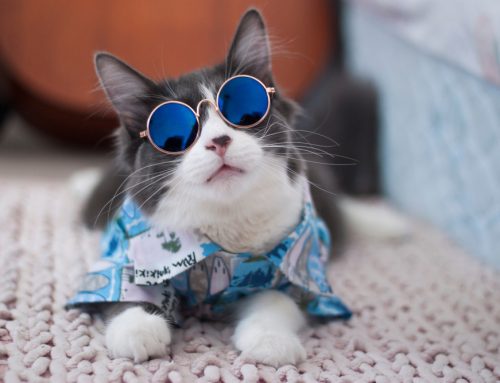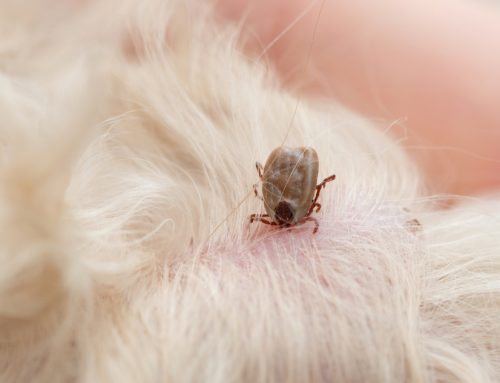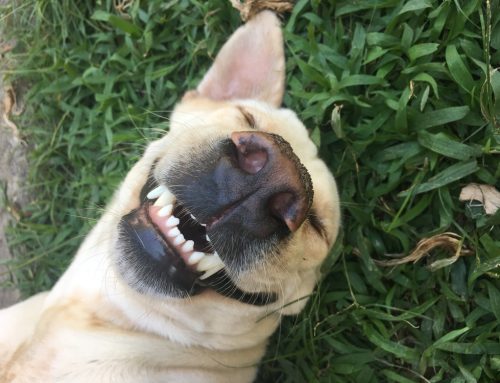Pets are great companions—snuggling up to us when we’re sick, making us laugh when we’re feeling down, and sniffing out hidden snacks. Pets’ powerful noses can lead them right to trouble, however, if they sniff out a toxic substance. Keep your four-legged friend safe from common household toxins by following our Hearthstone Veterinary Hospital team’s tips for pet poison prevention.
#1: Identify the most common household pet toxins
The most important way to keep your pet safe from poisoning is to first identify which toxins you have around your home. The American Society for the Prevention of Cruelty to Animals provides a rundown of the most common pet toxins:
- Over-the-counter (OTC) medications — Pet owners often give their furry pals OTC medications when their animal companions are in pain, have diarrhea, or develop another condition. In addition, pets can find these medications in purses and backpacks, or if you have inadvertently dropped a pill on the floor. While you can safely administer some medications to your pet, only do so if your veterinarian gives the OK, and carefully follow their dosing schedule. Ibuprofen, acetaminophen, cold and flu medications, vitamins, and supplements are common OTC medications that cause toxicity in pets.
- Prescription medications intended for humans — As with OTC drugs, pets can become poisoned by their owner’s prescription medications. Always store your medications in closed cabinets your pet cannot reach, and install a child lock for extra security. The most common prescription medications that cause toxicity in pets include attention deficit hyperactivity disorder (ADHD) and cardiac medications, and antidepressants.
- Food intended for humans — To prevent your pet from being poisoned, avoid sharing snacks with them. Do not give your pet grapes, raisins, onions, garlic, macadamia nuts, and xylitol (i.e., a sugar substitute), or foods or products that contain these ingredients. For example, sugar-free peanut butter is often sweetened with xylitol, so always read food ingredient labels carefully.
- Chocolate — Dogs have a nose—and a taste—for chocolate, which can end in serious gastrointestinal (GI) upset. More severe chocolate toxicity cases can cause seizures, heart arrhythmias, respiratory failure, and hyperthermia. One ounce of milk chocolate per pound of your dog’s body weight is a potentially lethal dose. Remember, the darker the chocolate, the more toxic it is to pets.
- Plants — If your pet nibbles or ingests indoor and outdoor plants and flowers, they can die. True lilies are most notorious for causing plant toxicity in cats. Even if your cat drinks water from a vase containing lilies, they can develop deadly acute kidney failure. Before bringing home bouquets or planting your garden, check the ASPCA’s Toxic and Non-Toxic Plants list.
- Household chemicals — Household items, such as cleaning supplies, home improvement products, and cosmetics, pose a threat to pets. Keep these items securely stored out of your pet’s reach. In addition, prohibit your pet from entering a room you are cleaning until the product (e.g., floor cleaner) is dry.
- Veterinary products — Chewable and flavored medications are designed to appeal to your pet. Because these products are so appealing, keep them out of your four-legged friend’s reach to prevent them from sniffing out the tempting package.
- Rodenticides — Rodenticides are created to attract rodents, so they will likely also draw in your pet. Never use these products around your dog or cat, because they can quickly prove fatal. Depending on the rodenticide type your pet ingests, your furry pal’s prognosis may be dire, leaving your veterinarian no treatment options.
- Insecticides — Ant baits, bug sprays, wasp killers, and other insecticide sprays and products can harm your pet. Opt for pet-safe alternatives.
- Lawn and garden chemicals — If your pet ingests a fertilizer or herbicide, they can develop toxicity signs that range in severity from mild GI distress to death.
#2: Search your home for pet toxins
Now that you are aware of your home’s potential pet toxins, seek out these dangerous products. Typically, the bathroom and kitchen present the most pet poisoning hazards. When perusing each of your home’s rooms, be on the lookout for the following toxins:
- Kitchen — Search for foods that can poison your pet. You may have left pet-toxic foods on the countertop, stashed on top of the fridge, or tossed in the trash.
- Bathroom — Check for cleaning products, cosmetics, and toiletries that you may have left on the sink and countertop, or placed next to the toilet.
- Living room — You may commonly have essential oil diffusers, batteries, and snacks in your living spaces. These items can prove highly toxic to your pet.
- Bedroom — Your pet may easily access sleeping medications and supplements, Vicks VapoRub, cold and flu medications, and TV remote batteries on your bedside table.
- Garage — Antifreeze, lawn and garden chemicals, rodenticides, and insecticides may line your garage shelves.

#3: Secure pet toxins out of reach
Plan to keep household toxins safely out of your pet’s reach. To prevent your pet from being poisoned, follow these tips:
- Install child locks on cabinets and drawers
- Keep chemicals in their labeled containers to show your veterinarian if your pet ingests them
- Use a locking trash can
- Block your pet’s access to areas where you are using chemicals
If your pet gets into a toxin, contact animal poison control immediately. Then, call our Hearthstone Veterinary Hospital team for treatment.







Leave A Comment